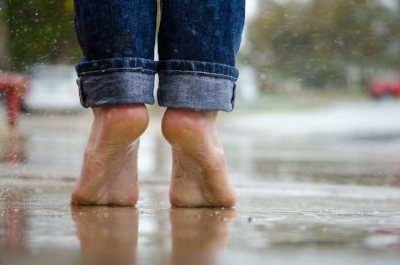
Q: My 3-year-old child has been walking since 16 months old, but stands and walks tippy-toed. He is a fast runner, but is often clumsy and losing his balance. Should I be concerned? What can I do to help him?
A: Children walk on their toes for a variety of different reasons. It becomes a problem when it interferes with the child’s balance and level of functioning. Your child should be safe outdoors or on the stairs. May sure that your child is able to keep up with his peers.
Determine if your child has been always walking that way or if it is something new. Check for ankle stiffness or a response to a rapid stretch. Examine if the child has the ankle flexibility to stand with his heel down and walk heel to toe. The options for increasing flexibility are stretching, night splints, serial casting, and surgery. Medical causes, such as cerebral palsy and muscular dystrophy, must be ruled out.
If a child has inadequate ankle flexibility, he will not be able to walk heel to toe. Muscle groups that are commonly weak are the abdominal obliques, gluteals, shoulder stabilizers, and ankles. Weakness in these muscles can put a child in a forward-leaning position. Once the child starts walking, he would naturally walk on his toes. Strengthening these muscle groups improves postural control and helps to create a more neutral posture. Activities that strengthen these muscle groups include: wheelbarrow walk, bridges, climbing on ladders/playground equipment, and standing on the bed, playing catch.
There is research linking toe-walking with language disorders and other neurodevelopmental disorders. Tippy-toe-walking may also be due to poor sensory processing. Children who toe-walk should have their vestibular (inner ear balance system) system assessed. The vestibular system mediates tone, anti-gravity muscle activity, and some reflex activity that affects walking, balance, and ankle control. Some signs that a child has a vestibular disorder are that they dislike swings, never get dizzy, get carsick easily, and have difficulty with ball play. Toe-walking increases the amount of proprioceptive (feedback from the muscles and joints) input the child is getting as they walk. Children who crave deep pressure may use toe-walking to increase that input that they seek. Sensory and vestibular integration can be addressed with rehabilitation.
Toe-walking can be a persistent habit. If appropriately managed, flexibility is maintained and balance reactions and gross motor skills are developed. Your child may just need gentle reminders to correct. Looking at the child as a whole, stretching and strengthening of postural musculature may be recommended.